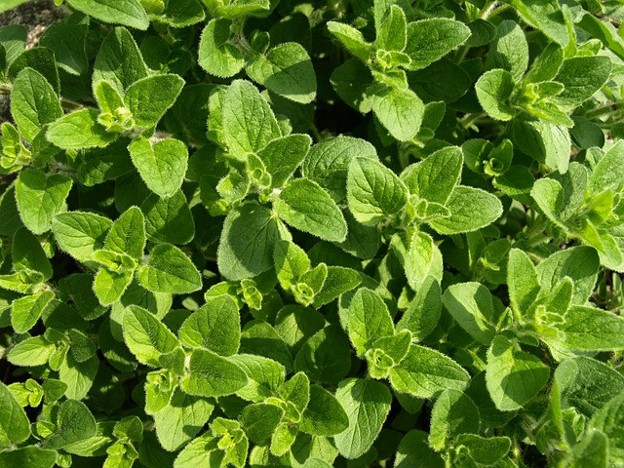Oregano (Origanum vulgare) is an herb that’s a member of the mint (Lamiaceae) family. It has been used for thousands of years in folk medicines to treat upset stomach, respiratory complaints and bacterial infections.
Oregano leaves have a strong aroma and slightly bitter, earthy flavor. The spice was used in ancient Egypt and Greece to flavor meats, fish and vegetables.
Types/Varieties
There are several types of oregano offered across the globe. Common oregano is known as “origanum vulgare” and is also called “wild marjoram.”
The varieties that are most popular for cooking are Greek oregano and Italian oregano. The Greek variety is more pungent, while the Italian type has a sweeter aroma.
Some other varieties include:
- Syrian oregano
- Golden oregano
- Curan oregano
- Mexican oregano
There are also varieties that are not consumed but used for decorative purposes. This includes pilgrim oregano, amethyst falls oregano and hop-flower oregano. These types have colorful flowers and grow easily in gardens.
Benefits
The leaves and dried versions are excellent sources of antioxidants and antibacterial compounds. Most studies involving the herb are done with its essential oils, which is a more concentrated form and has greater efficacy for promoting overall wellness and healthy aging.
Research shows that this herb has the following benefits:
1. Antioxidant Powerhouse
Oregano is jam-packed with health-promoting antioxidants, including limonene, thymol, carvacrol and terpinene. In fact, it’s one of the top antioxidant foods with an oxygen radical absorbance capacity (ORAC) score of 159,277.
There are numerous benefits of eating foods high in antioxidants. They help slow the effects of aging by reducing free radical damage, which can contribute to many health issues and premature aging.
Antioxidants positively impact your skin, eyes, heart, brain and cells as well.
Studies on oregano extracts show that the herb’s antioxidant effects are likely attributed to carvacrol and thymol, two components that have therapeutic and preventative purposes in folk medicine.
2. Has Antibacterial Properties
Several studies indicate that oil of oregano has antibacterial effects against a range of bacterial strains. There’s even research supporting the use of the oil as an alternative to harmful antibiotics for a number of health concerns.
One study found that oil of oregano possesses the highest antibacterial activity against E. coli, suggesting that the extract can be used to promote gastrointestinal health and prevent food poisoning.
What does this mean about the oregano leaves you add to your pasta sauce? They contain two important compounds, thymol and carvacrol, which help fight bacterial infections.
That said, using the more concentrated essential oil is far more effective for killing bacteria.
3. Reduces Inflammation
Cooking with this health-promoting herb, whether it’s dry or fresh, may help reduce inflammation. Studies on the herb’s essential oils show that it contains powerful anti-inflammatory properties.
This is due to the plant’s antioxidant activity, which helps improve chronic inflammation and a long list of diseases, including cancer and Alzheimer’s disease.
Oregano products are used to relieve inflammatory conditions including allergies and rheumatoid arthritis. Herbal extracts are also used topically to reduce issues like insect bites, psoriasis, acne and muscle pain.
4. Fights Viral Infections
Carvacrol, one of the main components in oregano, has been shown to possess antiviral properties. This enables oregano oil to delay viral disease progression and improve resistance to infections.
Again, these studies use the herb’s essential oil, which is far more concentrated than consuming fresh or dried leaves. However, they do highlight the beneficial compounds that are present in the plant.
Risks and Side Effects
Consuming dried or fresh oregano is safe in normal amounts, when added to recipes. People who are allergic to herbs within the Lamiaceae family, like mint and basil, should be cautious when eating it for the first time.
The oil is much more concentrated and should only be consumed for short periods of time, at a maximum of two weeks. It should also be diluted with water or coconut oil when taken internally.
The essential oil should also be diluted when applied topically to fight infections or reduce inflammation.



